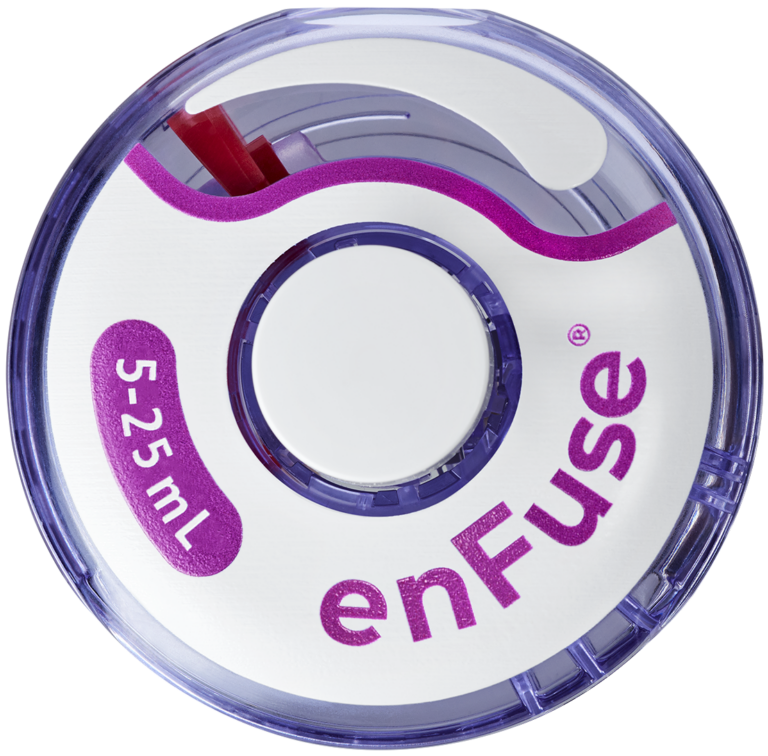Meet enFuse®
enFuse is an innovative, wearable drug delivery platform designed to comfortably and conveniently deliver large volumes of medications subcutaneously. Featuring hands-free wearable technology, patients receive their needed treatment through a simple site injection under the skin, instead of intravenously.
Recognized by leading industry publications such as Fierce Pharma and PM360, the enFuse has been presented with awards honoring our novel technology, business growth, and focus on the patient experience.


About Us
We are a healthcare innovation company committed to improving the patient treatment experience through the development and manufacturing of our enFuse wearable drug delivery platform.
Current Partnerships
Enable is working with a number of pharma partners to conduct clinical trials and plan for joint commercial launch of partnered therapies in combination with enFuse.







Patients love enFuse
Recent News
August 12, 2025
Enable Injections Announces enFuse® System Regulatory Approval in Brazil and MRHA Medical Device Registration in the UK
June 3, 2025
ASCO: new Sarclisa data support subcutaneous administration with on-body injector
April 25, 2025
Enable Injections Presents Survey Results Highlighting Missed Opportunities in Subcutaneous Oncology Drug Development at AACR 2025
Sign Up For Our Newsletter
Stay up to date on the latest enFuse technology, partnerships, events, and news by signing up to receive the once-monthly Enable Injections Newsletter direct to your inbox.
